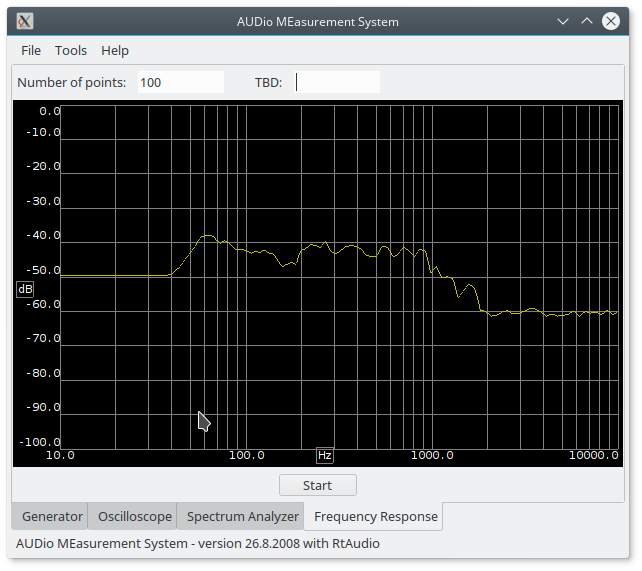
+
+
My current home stereo is a patchwork of various pieces I got on
+flee markeds over the years. It is amazing what kind of equipment
+show up there. I've been wondering for a while if it was possible to
+measure how well this equipment is working together, and decided to
+see how far I could get using free software. After trawling the web I
+came across an article from DIY Audio and Video on
+Speaker
+Testing and Analysis describing how to test speakers, and it listing
+several software options, among them
+AUDio MEasurement
+System (AUDMES). It is the only free software system I could find
+focusing on measuring speakers and audio frequency response. In the
+process I also found an interesting article from NOVO on
+Understanding
+Speaker Specifications and Frequency Response and an article from
+ecoustics on
+Understanding
+Speaker Frequency Response, with a lot of information on what to
+look for and how to interpret the graphs. Armed with this knowledge,
+I set out to measure the state of my speakers.
+
+
The first hurdle was that AUDMES hadn't seen a commit for 10 years
+and did not build with current compilers and libraries. I got in
+touch with its author, who no longer was spending time on the program
+but gave me write access to the subversion repository on Sourceforge.
+The end result is that now the code build on Linux and is capable of
+saving and loading the collected frequency response data in CSV
+format. The application is quite nice and flexible, and I was able to
+select the input and output audio interfaces independently. This made
+it possible to use a USB mixer as the input source, while sending
+output via my laptop headphone connection. I lacked the hardware and
+cabling to figure out a different way to get independent cabling to
+speakers and microphone.
+
+
Using this setup I could see how a large range of high frequencies
+apparently were not making it out of my speakers. The picture show
+the frequency response measurement of one of the speakers. Note the
+frequency lines seem to be slightly misaligned, compared to the CSV
+output from the program. I can not hear several of these are high
+frequencies, according to measurement from
+Free Hearing Test
+Software, an freeware system to measure your hearing (still
+looking for a free software alternative), so I do not know if they are
+coming out out the speakers. I thus do not quite know how to figure
+out if the missing frequencies is a problem with the microphone, the
+amplifier or the speakers, but I managed to rule out the audio card in my
+PC by measuring my Bose noise canceling headset using its own
+microphone. This setup was able to see the high frequency tones, so
+the problem with my stereo had to be in the amplifier or speakers.
+
+
Anyway, to try to role out one factor I ended up picking up a new
+set of speakers at a flee marked, and these work a lot better than the
+old speakers, so I guess the microphone and amplifier is OK. If you
+need to measure your own speakers, check out AUDMES. If more people
+get involved, perhaps the project could become good enough to
+include in Debian? And if
+you know of some other free software to measure speakers and amplifier
+performance, please let me know. I am aware of the freeware option
+REW, but I want something
+that can be developed also when the vendor looses interest.
+
+
As usual, if you use Bitcoin and want to show your support of my
+activities, please send Bitcoin donations to my address
+15oWEoG9dUPovwmUL9KWAnYRtNJEkP1u1b.
+
